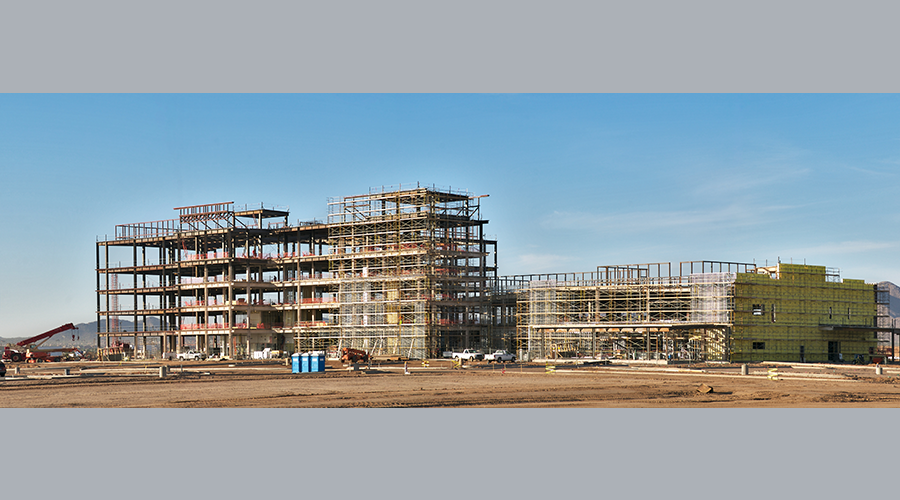How Location Data and Analytics are Revolutionizing Site Success

True site success prioritizes important mission and business objectives, such as patient volume and physician utilization.
The age-old real estate mantra of “location, location, location” has taken on new life in the healthcare industry. It is about more than just the real estate market. It is about insightful data and advanced analytics that drive business results.
Healthcare systems are in a constant state of balancing their missions to serve patients with optimal care while sustaining themselves financially — “no margin, no mission” as is oft said. Margins remain perilously low in the industry while overall costs of care have reached unsustainable highs.
One of the costliest occurrences impacting care delivery and the bottom line is a poor facility location decision. Real estate is a long-lived commitment that lasts years if not decades. Whether leased or owned, the biggest impact is when the decision is made: Invest now or don’t. Invest here or someplace else.
The true cost of a poor location decision is often unseen when the focus is on the lowest rent or being someplace because it feels right or a competitor might get there first. While rent and speed to market are important components in the decision, true site success prioritizes far more important mission and business objectives, such as patient volume and physician utilization. Achieving true site success requires defining measures of that success and relating them to specific addresses. The goal is twofold: Remove risk during the site acquisition process, and ensure long-term operational success.
Site selection demands deploying sophisticated healthcare location data and analytics to ensure that healthcare providers are set up for long-term success and take the necessary steps to achieve it. It is time to discard the antiquated notion of relying solely on real estate metrics and embrace a revolutionized concept: location intelligence.
Data and site success
Traditional metrics, such as rent or square footage, only scratch the surface of determining a site’s potential. Today, healthcare providers must dig deeper to evaluate the impact a site will have on their healthcare mission, sustainability goals and business viability. Questions such as, “How many patients will we serve?” and “What kind of services will be needed?” are vital. These are not just hypothetical queries. They are measurable metrics that directly relate to patient volume, service types and even specialized medical fields, such as orthopedics or pediatrics.
Location data and analytics can help service providers benchmark their performance against other sites that they control, spot positive and negative outliers within their own portfolio and understand the way they compare with other healthcare operators. Over time, healthcare systems might find the best overall business outcomes occur at higher-cost sites that are closer to a desired population or that is better suited for in-demand services.
Optimization vs. growth
The current economic climate has pushed many healthcare systems to maximize the efficiency of existing portfolios by asking “Where do we squeeze?” and using location analytics and site success metrics to refine the property portfolio.
Location intelligence and success metrics might reveal unproductive or underused spaces— so-called hidden vacancies — or excessive real estate and non-real estate costs that can be addressed through strategic consolidation or service reprogramming. Some expenses, such as high rent, are not always the easiest to walk away from.
Significant exposure to a particular landlord across many leased locations is common within healthcare and might present an opportunity to restructure using a bundled portfolio technique, where healthcare providers work with landlords for more favorable terms, such as reduced rent or resizing leases, in exchange for an early renewal. These negotiations can lead to mutually beneficial outcomes for healthcare providers and the landlords. But this tactic is far more complex than a single-lease blend and extend, and it requires sophisticated consideration centered on mission objectives and location business data and analytics.
Digging into the data
Data on its own is a weak tool for making decisions. Too often, businesses rely on easy-to-capture statistics that paint an incomplete picture, or they wrestle with an unmanageable number of performance indicators. Healthcare systems need to think about what factors drive success and apply the right analytics to understand the story the data hints at.
Here are a few ways data can better inform decision making:
Demographic drivers. Data such as patient and prospective patient locations, their age ranges and health insurance coverage, can indicate services they might need, services they can afford, whether they have children and are older.
Mobile device data. How far are patients traveling to come to a clinic? How far are staff driving to get to work, and is it an impediment to hiring or retaining them? Is there an opportunity to add another clinic that is closer? Location data can assess the risk of cannibalizing an existing operation or uncover an opportunity to consolidate multiple underperforming locations.
Competitor data. Looking at competitors’ locations can identify their patient bases and hint at their business strategies. Is it worth competing head-to-head or going into gaps where there is little to no competition?
While optimization remains a priority in 2024, there is a growing realization that sustainability is key. The focus is shifting toward developing a more sustainable healthcare model that balances cost control with the expansion of quality care. This shift will require a continued emphasis on data and analytics to drive decision making.
The integration of location data and analytics is crucial for healthcare providers seeking to optimize their real estate portfolios and support their growth strategies. As the industry evolves, organizations that harness the power of this data will find a competitive advantage and make informed decisions that ensure the success of sites and, ultimately, businesses.
Jay Johnson is national director, healthcare markets, with JLL.
The post "How Location Data and Analytics are Revolutionizing Site Success" appeared first on Healthcare Facilities Today

